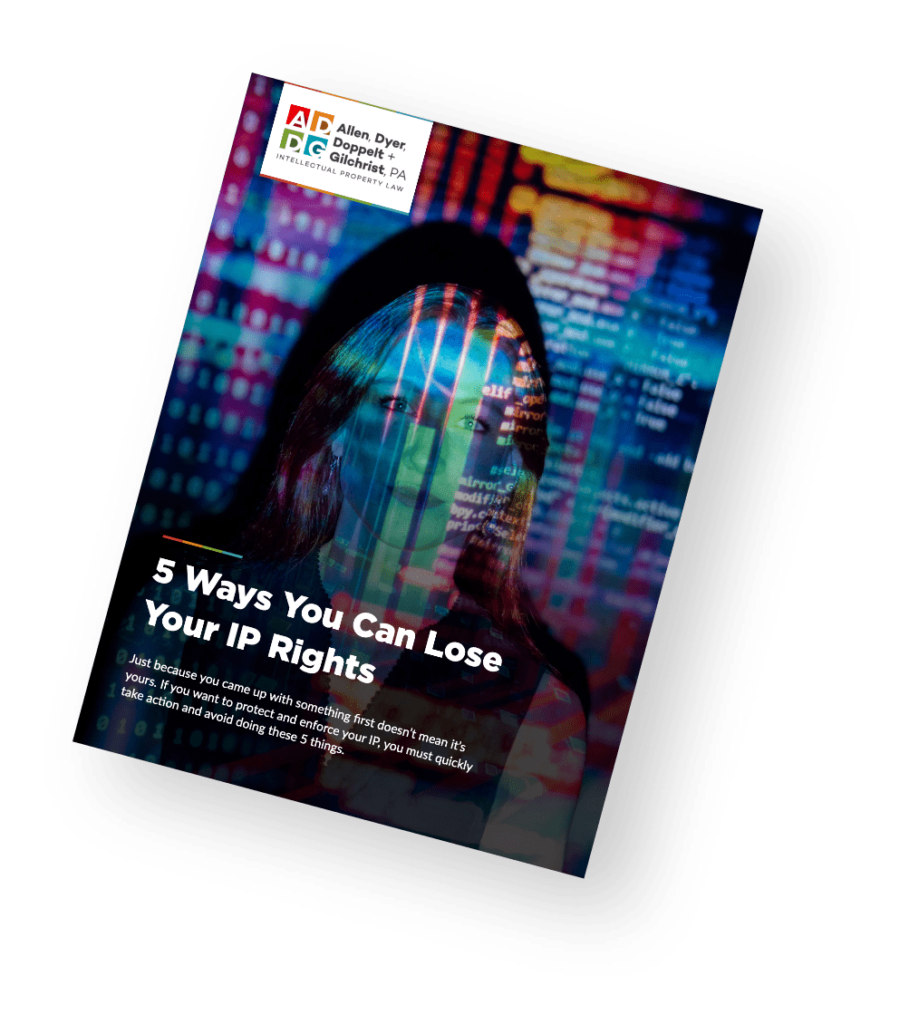FREE RESOURCE
Are Your IP Rights at Risk?
Download “5 Ways You Can Lose Your IP Rights” to find out.

OUR OFFICES

- Copyright © 2022 Allen, Dyer, Doppelt, & Gilchrist, P.A. - United States - All Rights Reserved.
- Legal |
- Sitemap |
- Disclaimer |
- Insurance MRFs

